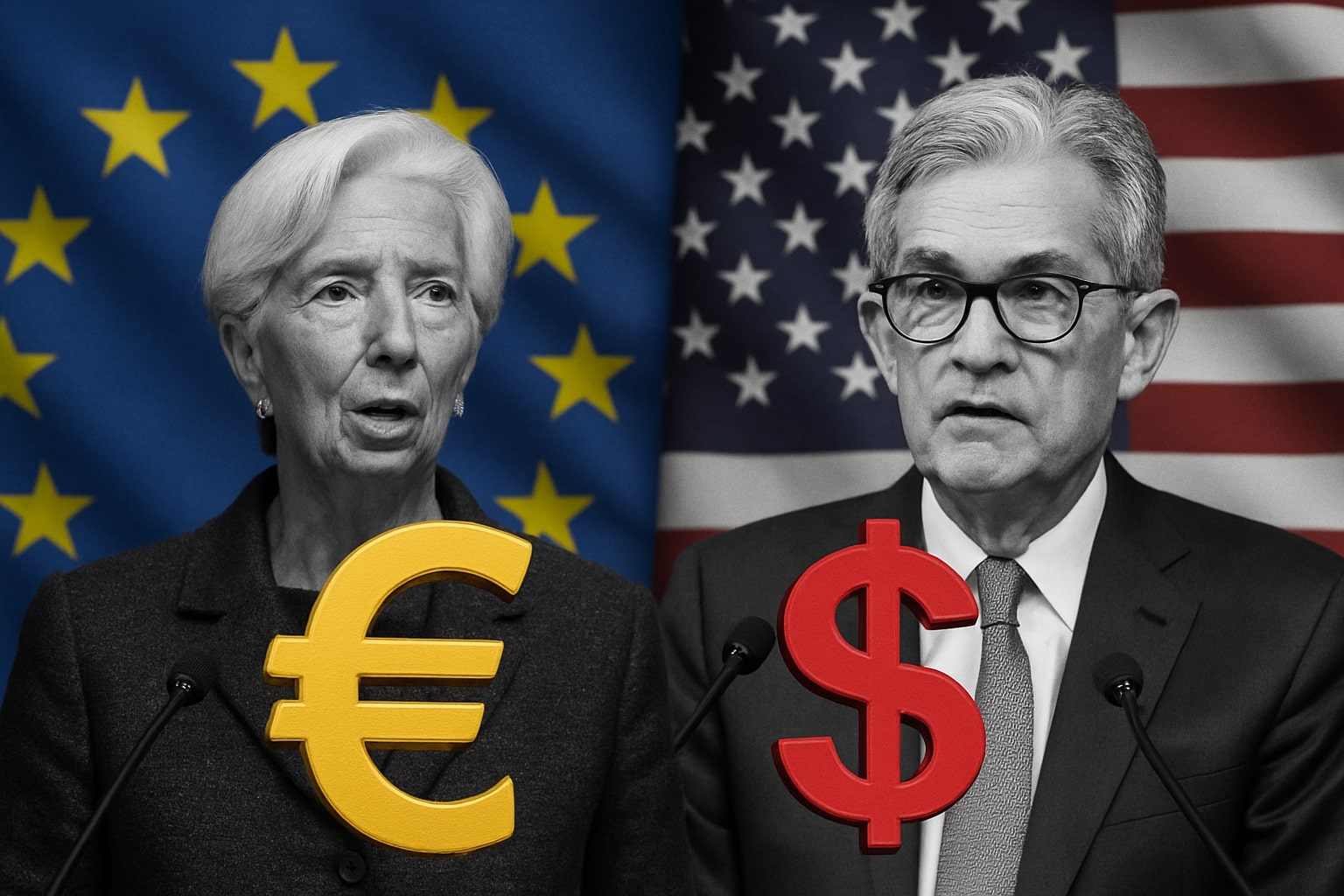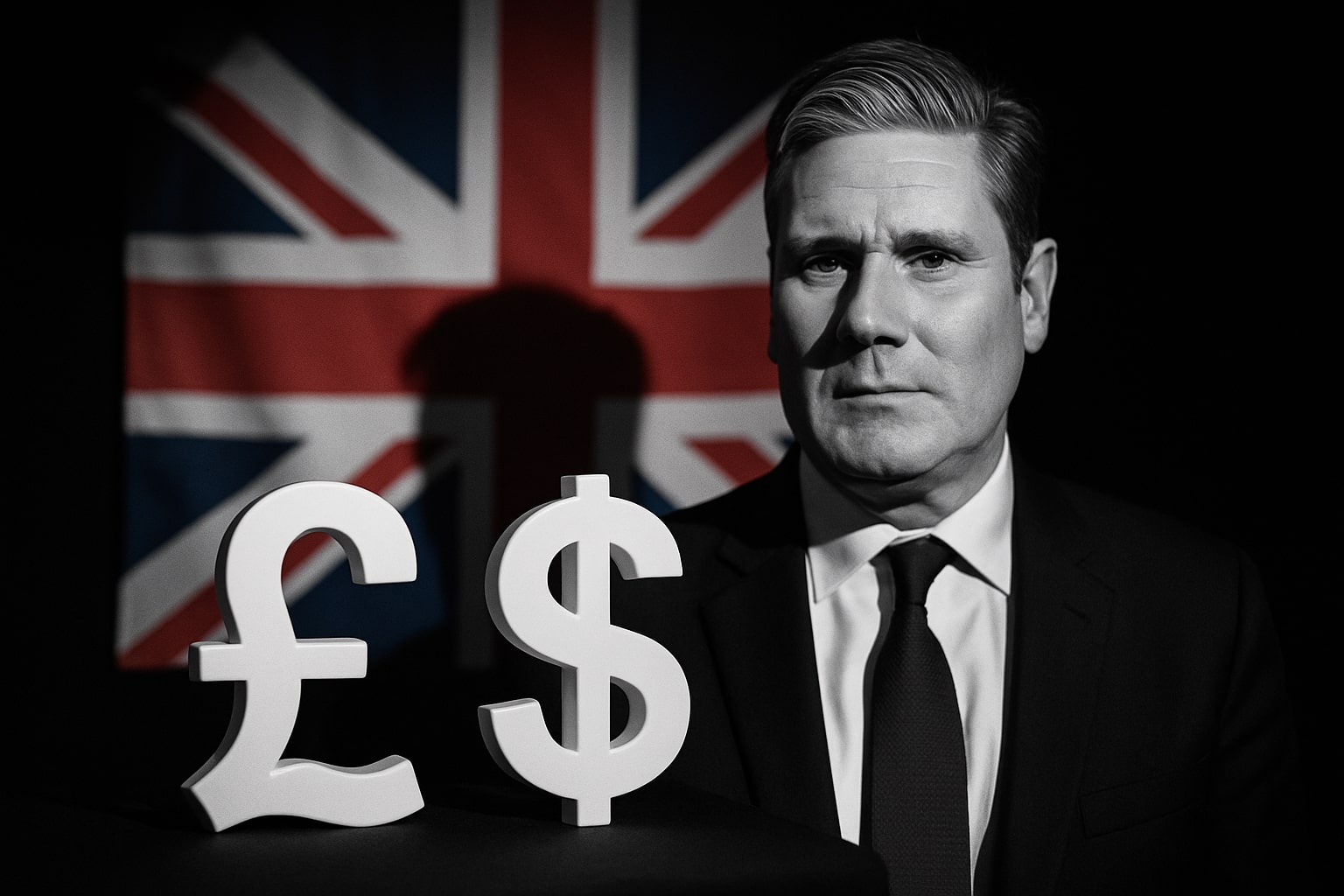
EUR/USD Price Forecast - Euro to Dollar Holds 1.1630 as the Dollar Struggles Under 99.40
The pair trades above 1.1600 after rejecting the 1.1500 breakdown, with EUR/USD eyeing 1.1660–1.1686 | That's TradingNEWS
EUR/USD Breaks Its Technical Ceiling As The Pair Confronts A Cross-Market Dollar Reset And A Cluster Of High-Risk Macro Triggers
EUR/USD is entering one of its most complex phases of 2025, sitting near 1.1630 after a volatile climb from the 1.1500 breakdown attempt earlier this month, and every layer of price action across equities, the DXY, Fed positioning, Eurozone data, and cross-currency flows is now converging on the pair at the same moment. The euro’s rise to 1.1655 this week was not powered by Eurozone strength but by a weakening USD struggling to reclaim its structural levels, specifically the 99.40 threshold on the DXY that continues to function as the global dividing line between dollar stability and renewed dollar weakness. The pair’s recovery began immediately after EUR/USD failed to sustain the break under 1.1500, and that reversal became the trigger for a broader series of higher highs and higher lows that now stretches from 1.1500 to 1.1655, with the current mid-range pivot sitting at 1.1593, a Fibonacci level that has already shifted from resistance into a potential higher-low anchor.
EUR/USD Strength Emerges From Dollar Vulnerability As The DXY Fights For 99.40 And Faces Pressure From 98.90 And 100.25
The U.S. Dollar Index has become the silent architect of every EUR/USD move. The DXY’s rejection from 100.25 and its subsequent failure to reclaim 99.40 on the higher timeframes created the breathing room that allowed EUR/USD to build this entire bullish micro-structure. The USD attempted to break lower toward 98.90 last week, bounced prematurely, and then stalled beneath 99.40, leaving traders without a confirmed dollar trend but forcing them to trade the pair through short-term imbalances instead of stable macro flow. Above the DXY sits unfinished buy-side inefficiency between 100.50 and 100.80, both regions that could quickly realign EUR/USD if tested. The scenario is clear: if the dollar regains 99.40, EUR/USD momentum weakens instantly, exposing 1.1600, 1.1593, and then the deeper 1.1575–1.1530 structure. If the DXY remains capped, EUR/USD can continue pressing upward into 1.1668, 1.1686, and 1.1717, three layered levels that define the resistance architecture of the pair.
Euro Momentum Builds But The Trend Still Battles The Legacy Of September’s Downtrend And The 1.1660 Control Zone
EUR/USD displays early bullish structure on lower timeframes, yet the pair has not fully dismantled the broader downtrend that began in September. The 1.1660 zone is the center of gravity: a multi-month point of control, a prior resistance shelf, and the exact level where bullish trend confirmation becomes credible. EUR/USD spent more time trading at 1.1660 between July and November than any other price, turning this level into a psychological and structural pivot unmatched in importance. The September low at 1.1608 flipped from resistance to support last week, forming the backbone of this most recent rally, but without a firm break above 1.1660, buyers remain aggressive but unproven. Above 1.1660, the pair must still clear 1.1668, 1.1686, 1.1717, and 1.1748, a stacked wall of chart memory that has rejected bullish attempts in prior months.
Macro Backdrop Fuels EUR/USD As Investors Navigate A Data Vacuum, Rising Volatility, And Misalignment Between Markets And The Fed
EUR/USD is benefiting from a unique macro distortion created by delayed U.S. economic data. The prolonged government shutdown withheld key indicators such as CPI, PPI, and NFP, forcing traders to operate on partial information while speculative flows overpower fundamental logic. The only recent major U.S. trigger—the 3.1% CPI reading from November 12—cooled just enough to ignite speculation about rate-cut timelines despite Fed officials staying firmly hawkish. The divergence between market expectations and official Fed posture is at its widest level since early 2024. The VIX rising from 14 to 17 in ten days confirms that volatility premiums are widening, and this rising uncertainty has fueled strategies such as EUR/USD long straddles for December expiries and call spreads targeting 1.1670–1.1730. These plays reveal how aggressively traders are positioning for a breakout beyond the tight 1.1600–1.1650 corridor. The upcoming release of backlogged U.S. economic data will either validate the euro’s recent strength or erase it in a single week.
Cross-Currency Pressure From EUR/JPY And USD/JPY Reinforces Euro Bid As Yen Weakness Pushes EUR/JPY Toward 180.00
EUR/USD’s bullish tone is indirectly supported by cross-flows in the EUR/JPY and USD/JPY markets. EUR/JPY surged to all-time highs just under the 180.00 psychological barrier after months of relentless yen weakness and structural euro outperformance. The yen’s decline began after USD/JPY reversed from 140.00 in April and climbed into 155.00, its highest level in nine months, yet EUR/JPY outperformed because European monetary posture has stabilized while Japan remains unable to tighten policy. When the yen weakens aggressively, the most efficient capital flows often favor EUR/JPY rather than USD/JPY due to intervention risks looming near 160 on the dollar pair. EUR/JPY’s rising higher-low structure with support zones at 178.57–178.82, 177.86–178.07, and 177.00–177.24 continues generating upward euro flow, indirectly assisting EUR/USD during periods of USD softness.
Eurozone Data Remains Fragile, But Yield Differentials And Capital Positioning Provide Structural Support For EUR/USD
At the macro-European level, incoming economic releases show a mixed picture. Industrial output remains weak, producer prices continue falling, and employment growth has stalled. Yet yield spreads between German bunds and U.S. Treasuries still lean in favor of the euro, reinforcing medium-term support during dips and allowing the pair to stabilize above 1.1600 even when sentiment sours. Risk aversion last week briefly knocked EUR/USD from 1.1655 to 1.1621, but the pair quickly reclaimed ground because traders remain skeptical that the Fed will maintain restrictive policy deep into 2026. The ECB’s upcoming speeches from Vice President Luis de Guindos, mid-week inflation data, and flash PMIs will determine whether the euro can sustain its trajectory or fall back toward 1.1580. Eurozone growth came in at 0.2% in Q3, while the region posted a €19.4 billion trade surplus in September—both modest but stabilizing indicators.
Read More
-
Nebius Stock Price Forecast - NBIS Shares Collapses to $83.54 While Securing $20B+ AI Megadeals
16.11.2025 · TradingNEWS ArchiveStocks
-
XRP Price Forecast - XRP-USD Stalls at $2.22 Despite $58M XRP ETF Surge
16.11.2025 · TradingNEWS ArchiveCrypto
-
Oil Prices Forecast - Oil Jump as 2.2M-Barrel Russian Disruption Collides With Global Oversupply
16.11.2025 · TradingNEWS ArchiveCommodities
-
Stock Market Today: Wall Street Drops as Nasdaq Hits 22,552 and S&P Falls to 6,664 Before Nvidia’s Report
16.11.2025 · TradingNEWS ArchiveMarkets
-
GBP/USD Price Forecast - Pound Drops to 1.31743 as Fiscal Turmoil and Delayed US Data Shake Markets
16.11.2025 · TradingNEWS ArchiveForex
Technical Structure Shows EUR/USD Coiling For A Larger Move As The Pair Holds Above 1.1600 And Prepares For 1.1686–1.1748
The technical landscape shows EUR/USD pressing against its compression ceiling. The lower-timeframe breakout from the falling wedge structure has held through several re-tests. The RSI sits near overbought territory, warning of short-term exhaustion, but the structure remains intact as long as 1.1600 and 1.1593 remain undisturbed. Resistance sits tightly stacked above: 1.1660, 1.1668, 1.1686, 1.1717, and 1.1748, each corresponding to multi-month swing points and Fibonacci confluence. The pair is trading above its reverse trendline, consolidating just beneath 1.1650–1.1670, where bullish continuation hinges on a decisive daily close. Failure to break would send EUR/USD back into the 1.1580–1.1610 zone before volatility from next week’s data releases creates a fresh directional push.
EUR/USD Market Positioning Shows Options Traders Pricing A Breakout As Spot Traders Stay Split Between Dollar Rebound And Euro Stability
Positioning data and market behavior illustrate a market divided. Traders skeptical of dollar resilience are accumulating EUR/USD calls above 1.1670 and targeting the 1.1730 zone for medium-term continuation. Bearish traders are building put positions below 1.1610 to target 1.1575 and then 1.1530, a structure reminiscent of the 2024 reversal setups where the euro’s rallies were repeatedly faded after hot U.S. data. Short-term options activity confirms uncertainty: volatility demand on EUR/USD has surged as traders anticipate a meaningful break from the current pattern once U.S. backlogged releases hit the tape.
EUR/USD Verdict: BUY
The full scale of technical, macro, cross-flow, and volatility data supports a BUY on EUR/USD. The pair is trading above structural levels at 1.1593, holding above 1.1600, lifted by a weakening USD struggling under 99.40 resistance, reinforced by EUR/JPY capital flows, supported by yield differentials, and positioned for a breakout once backlogged U.S. data resolves. The path toward 1.1686, 1.1717, and 1.1748 remains favored while EUR/USD holds above 1.1600.


















